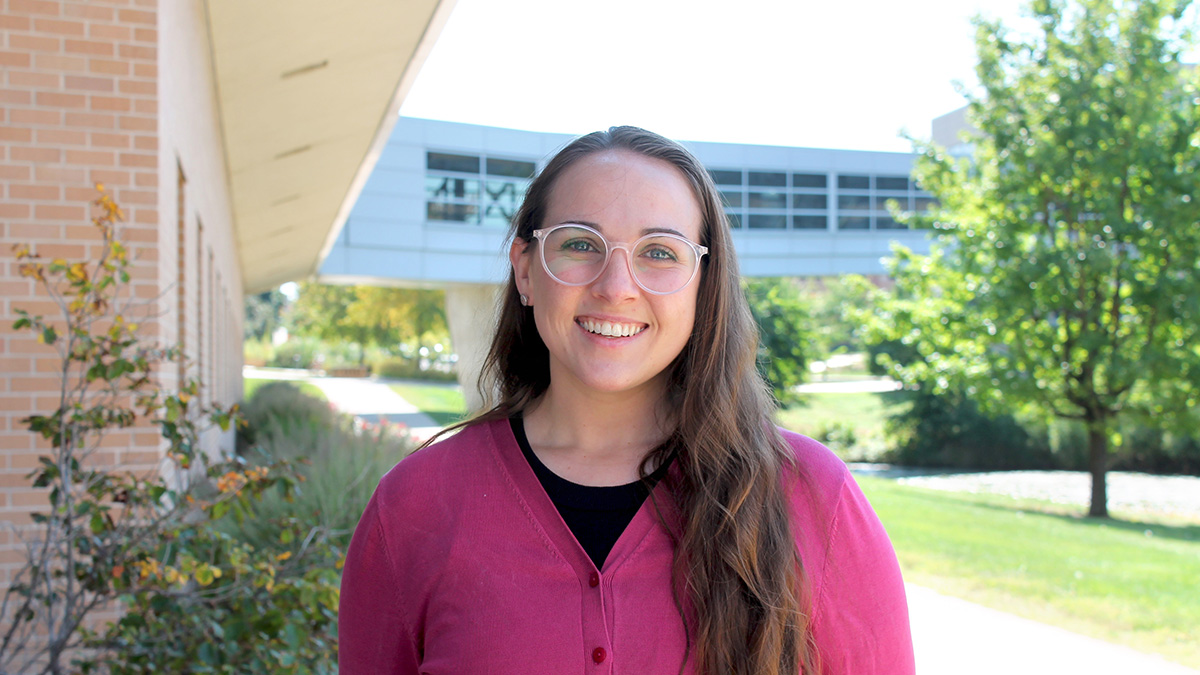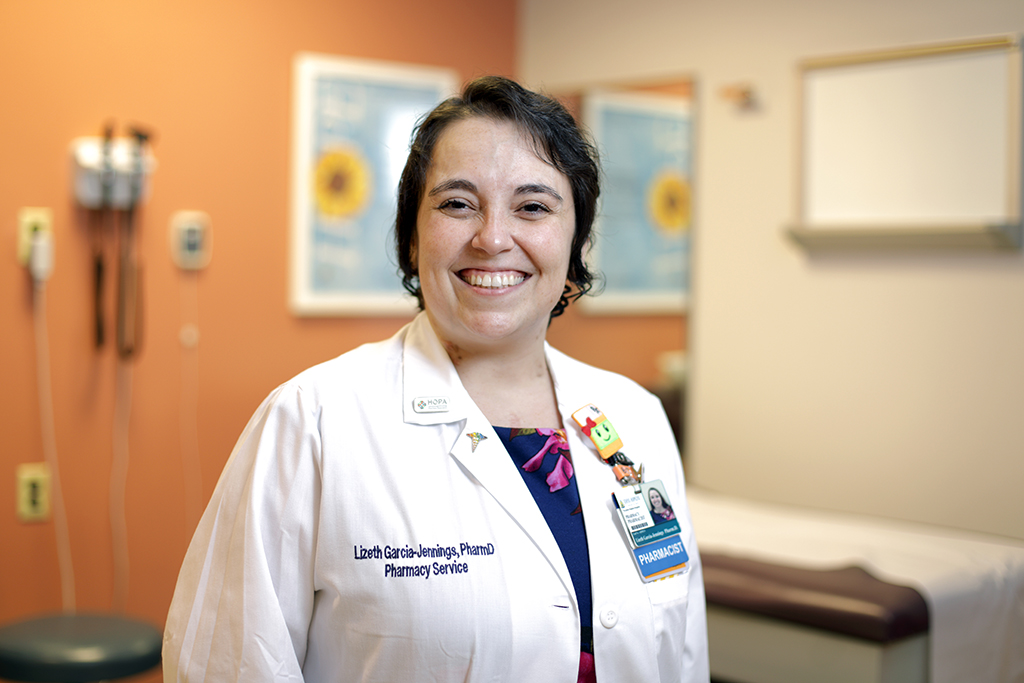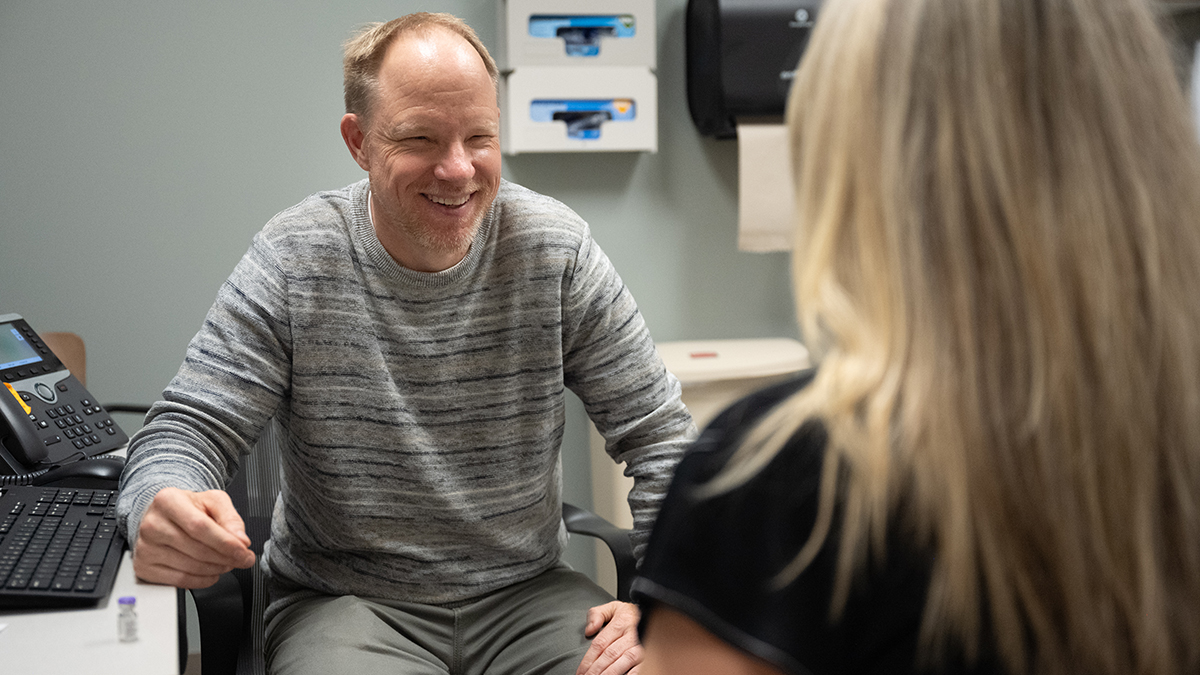
UW–Madison School of Pharmacy alumni are putting provider status into practice to transform patient care
By Jessica Steinhoff
Provider status is reshaping what it means to be a pharmacist, opening the door for services many had been offering for years, but without reimbursement. Across Wisconsin and beyond, pharmacists are expanding clinical services and improving patient outcomes. And now, as provider status gains steam nationwide, pharmacists are getting paid for many of those services.
The turning point came in 2023, when Wisconsin Act 98 went into effect. For the first time, Wisconsin pharmacists could be reimbursed through Medicaid not just for medications, but also for an array of services within their scope of practice, from chronic disease management to immunizations and patient education.
“This change allows communities to utilize their pharmacists to the highest degree of their license,” Boscobel Pharmacy owner Michelle Farrell (BS ’99, PharmD ’00) noted in early 2022, shortly after Gov. Tony Evers signed the bill into law.
Wisconsin is now one of 19 states across the country that recognizes pharmacists as healthcare providers, and as practice evolves with the new designation, University of Wisconsin–Madison School of Pharmacy alumni are helping to pave the way forward.
Patient access and pharmacist opportunities
Wisconsin’s Act 98 is an incentive for pharmacies to offer clinical services to more patients, increasing healthcare access in communities where provider demand far exceeds supply. Struggling independent pharmacies can now pursue new revenue streams that allow them to shore up finances. What’s more, pharmacists can contribute to medical teams in more sophisticated and specialized ways.
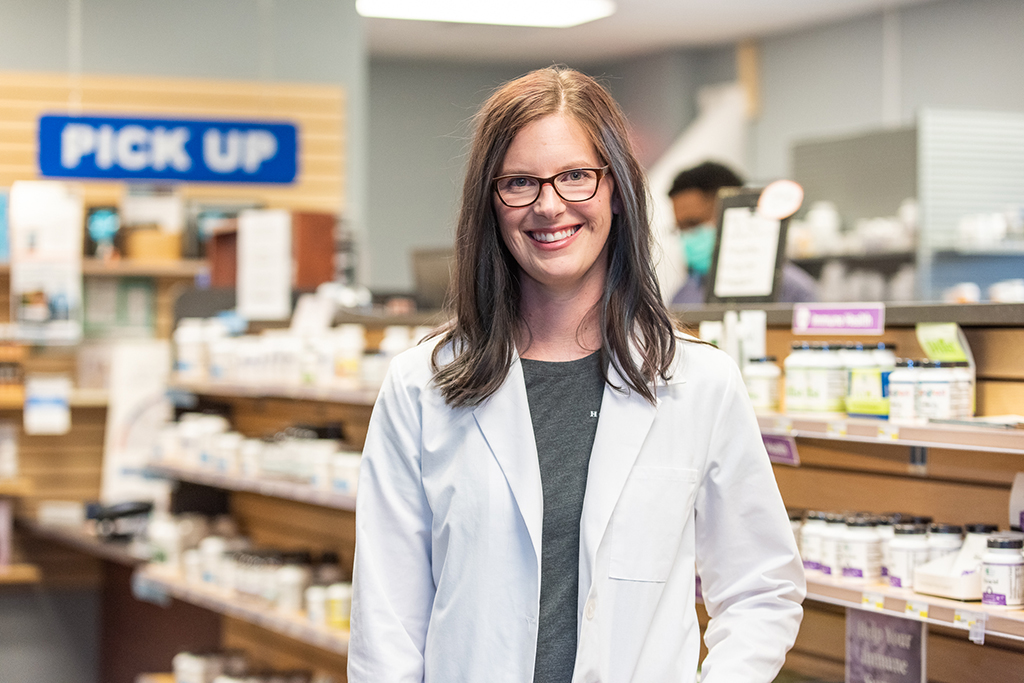
Abbi Linde (PharmD ’11) is closely watching this evolution of pharmacy. As a managing network facilitator for the Wisconsin chapter of Community Pharmacy Enhanced Services Networks (CPESN), she supports pharmacies that are expanding their clinical offerings to better serve patients. Showing payers the value of pharmacists with provider status is an important part of her work.
During these conversations, she finds opportunities for pharmacies to practice at the top of their licenses and even create new collaborative practice agreements (CPAs), wherein physicians delegate certain patient care services to a specific set of pharmacists. Pharmacists can sometimes then bill health plans for these clinical services, although non-Medicaid plans are not yet required to reimburse pharmacists as providers.
“A lot of Wisconsin’s Medicaid HMOs have commercial lines of business, some of which will enroll pharmacists as providers and pay their claims,” says Linde. “We pay attention to the plans that reimburse pharmacists to identify which plans pharmacies should focus their contracting efforts.”
Implementation challenges and solutions
Shane Resch (PharmD ’09), pharmacist and president of Gwidt Pharmacy, is working hard to get Medicaid reimbursement at the independent pharmacies he owns in Manitowoc, Oconto Falls, Pulaski, and Wittenberg, Wisconsin — all of which serve high numbers of Medicaid patients. Act 98 has introduced new revenue possibilities.
“We started offering test-to-treat for strep and influenza in Wittenberg a few years before the law changed,” says Resch. “If a patient’s test results warrants it, we can offer treatment through a CPA with a local provider.”
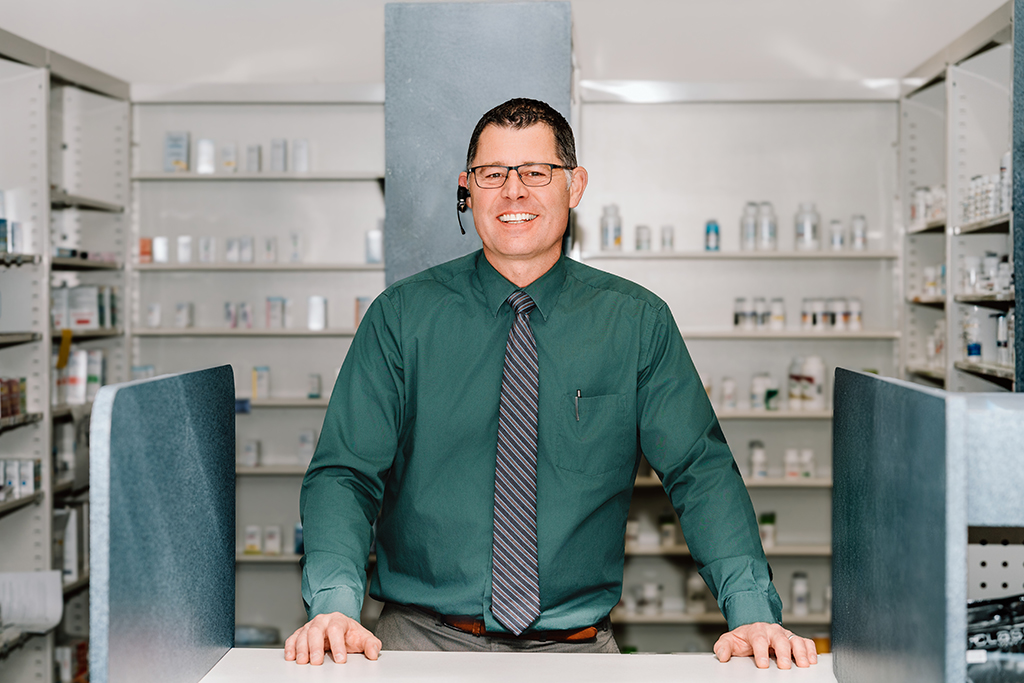
More than a dozen states let pharmacists prescribe treatments in response to CLIA-waived tests — simple screenings that can be run outside of a traditional lab — without physician signoff, covering conditions such as COVID-19, RSV, and urinary tract infections, as well as HIV and other sexually transmitted infections.
Resch wants his pharmacies to get Medicaid reimbursement for services like these as well as pharmacogenomic testing. Even now that pharmacists in Wisconsin can seek this reimbursement, Resch says that large gray areas remain.
“We’re trying to figure out what we can and can’t bill Medicaid for and what documentation we need to have, but we’re having trouble finding some of the answers,” he says.
Pharmacogenomic testing provides clues about how a patient will respond to a particular medication. It can guide drug selection, dosing, and more. Healthcare providers often order these tests when devising treatment plans for blood clot prevention, depression, high cholesterol, HIV, and multiple sclerosis. They’re becoming more common in cancer treatment as well.
“Pharmacogenetics can help us optimize patient care when someone is resistant to certain medications. Patients are likely to be frustrated if their treatment isn’t working, which can make them lose trust in the system,” says Resch. “This has all kinds of negative effects, from missed appointments to immunization hesitancy.”
Pharmacists are uniquely positioned to rebuild trust in the system. This relationship-based work is so valuable that it deserves reimbursement, Resch argues.
“Because we tend to see them more often than their primary care providers do, we often know them better. That’s a huge opportunity.”
—Shane Resch
“I think pharmacists impact vaccination rates an awful lot just by chatting with patients,” he says. “Because we tend to see them more often than their primary care providers do, we often know them better. That’s a huge opportunity.”
Despite the hurdles, Resch and his team continue to seek answers about billing and are building a foundation for providing more clinical services. A commitment to fairness keeps him going. So does knowledge about cost savings.
“Pharmacists provide the most cost-effective triage there is. A patient walks in with a question, and we direct them to the proper access point for care. We facilitate communication between hospitals and primary care providers, especially when they’re not in the same health system, and we help when other handoffs go wrong,” he says. “We do this all the time, and we should get reimbursed for it.”

Helping pharmacies like Resch’s navigate billing is one of Linde’s specialties. She directs them to free resources such as the Flip the Pharmacy content library and encourages them to request reimbursement for services they’re providing for free. This typically means adding documentation to workflows. She also helps them adapt these workflows to accommodate more clinical services.
“Many community pharmacies have workflows that are primarily set up to dispense medications, not support appointment-based care,” she says. “Here at CPESN, we help them transition into a model that’s focused on taking care of disease states in a comprehensive way, which usually involves appointments.”
Education is a major component of this effort. It’s not just about imparting facts. Pharmacists have to get comfortable with changes and feel confident implementing major ones.
Showing pharmacies how to integrate clinical services into medication synchronization is a game changer, Linde says, pointing to an example involving chronic disease management.
“If a patient is taking medications for blood pressure, cholesterol, and diabetes, we might see if the pharmacy can fill all of those at the same time, talk to the patient about adherence and side effects, and measure their blood pressure and A1C to provide an enhanced service that’s also billable,” she explains. For patients, that means fewer trips to the pharmacy, improved monitoring, and better coordination of their medications, all of which lead to better outcomes.
Linde has gained valuable insights by participating in a workgroup dedicated to medical billing best practices. She gets to review claims submission data, which reveal which types of claims payers are most likely to reimburse. Linde has noticed that quite a few pharmacies succeed at billing for preventive medicine consults when counseling patients about immunizations. Discussions about naloxone during opioid abuse screenings are often billed in this way, too. Many claims for patient education sessions — say, teaching someone how to use a blood pressure monitor — are also being reliably paid.
Specialization and collaboration
The Veterans Health Administration (VA) is a shining example of how provider status can enhance both the pharmacy profession and patient care, with a scope of practice for some pharmacists that has included prescribing medication and ordering labs since the 1980s. Over the years, the pharmacists in these roles have earned the right to make treatment decisions independently, serving as a model for how other pharmacies can approach provider status.
Eric Geurkink (PharmD ’99) is a clinical pharmacy specialist at the Minneapolis VA Health Care System, which cares for about 100,000 military veterans. Many of these patients have a complicated set of physical disabilities, chronic conditions, and mental health challenges such as post-traumatic stress disorder.
Before joining the VA in 2001, Geurkink completed a community pharmacy residency. At the time, he recalls, physicians weren’t as amenable to forging CPAs with pharmacists. The VA was an exception, though clinical pharmacists didn’t see patients as autonomously as they do now. Getting buy-in from doctors, nurses, and other key stakeholders paved the way for change.

“In the early 2000s, there was a push for clinical pharmacists to see patients independently across the VA,” he says. “We learned to speak the language of physicians and had physician champions who’d give testimony about our abilities to colleagues.”
Clinical pharmacists also showed that they could collaborate with medical teams and work independently, lightening the workloads for physicians and nurses. The process took years, but it worked.
“Our scope went from being very specific in what we could manage to more general in what we could prescribe,” Geurkink explains. “Now, when a new clinical pharmacist is appointed to a clinical practitioner position and earns a scope of practice in the health care system, they don’t have to justify their existence like they did even 15 years ago. Everyone knows they can expect a high level of expertise in prescribing.”
Geurkink says clinical pharmacists could do even more for patients if the profession developed advanced practice training programs. He envisions them preparing pharmacists to do diagnostic work like nurse practitioners do.
Currently, clinical pharmacists are seen as the medication experts on the VA’s multidisciplinary healthcare teams. Geurkink argues that pharmacists are best equipped to manage certain conditions. Plus, many of the VA’s clinical pharmacy practitioners specialize in specific areas, such as mental health treatment or pain management.
“Patients deserve this efficient, streamlined care. And pharmacists are ready and able to provide it.”
–Eric Guerkink
“A physician might refer a patient to one of our clinical pharmacists for control and treatment of migraine episodes since we can develop a medication regimen that’s really tailored to their needs,” Geurkink says.
When a referral like this happens, wait times for patients tend to decrease, and physicians can spend more time on complex cases that require their own expertise, Geurkink notes. And when access to care improves, patients are more likely to take their medications as intended, communicate effectively with their providers, and experience better health outcomes.
“Patients deserve this efficient, streamlined care,” he says. “And pharmacists are ready and able to provide it.”
